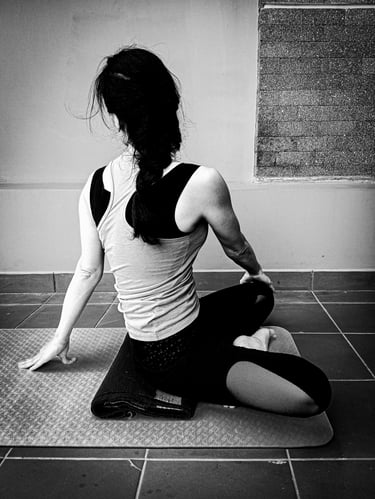Intentional Movement
And although a pop may occur during a stretch or twist, it’s not the goal—nor should it be.
If you find yourself repeatedly cracking your back, it might be a sign you’re overlooking deeper contributors—such as a weak core, poor movement habits, or even disc-related concerns.
What’s more, overzealous or forceful twisting can overstretch ligaments, strain muscles, or, in some cases, lead to joint irritation or injury—particularly when done improperly or too frequently.
Focus instead on gentle, intentional movement—like supported twists, side bends, and core stabilisation. These build true mobility and resilience, supporting your spine rather than destabilising it. (The principle of gentle movement over forceful cracking applies to all joints—knees, neck, shoulders, hips, fingers, etc.)
Let’s not confuse a sound with a solution.
Too many social media posts seem to glamorise “popping” the back—as if that satisfying crack were a fix for back pain. But let’s be clear: popping your back isn’t a treatment.
That audible “pop” comes from gas bubbles releasing in the synovial fluid of your joints. While it may feel relieving in the moment, it doesn’t correct underlying issues like muscle imbalances, postural dysfunction, inflammation, or spinal instability.




Endnote:
A chiropractic adjustment is not simply about creating a satisfying pop. It’s more like a skilled carpenter identifying the specific misaligned screw or warped frame causing a door to stick, then making a precise correction to restore proper function. There’s intention, skill, and anatomical knowledge behind it—something casual cracking simply doesn’t offer.
More Insights
